Reward charts play a crucial role in changing or improving a child’s behavior. They enable parents or teachers to set specific goals on what they want the child to accomplish. When a child accomplishes the desired goal or behavior, it gets marked off on their chart, and after enough checks, the child is rewarded by the caregiver.
The idea of using it is to encourage behavioral modification. After completing the same task multiple times, it will become a habit of the child.
For example, caregivers who want to train a child in the act of being courteous to others can benefit greatly from using this chart. Teachers who want to encourage good study habits, including answering a question correctly and scoring highly in tests, can also use it to encourage such good behaviors.
Parents who want to encourage children to do their daily chores, clean up toys after playing, organize their rooms, share snacks and meals nicely with siblings, exercise regularly, eat more healthy meals such as fruits and vegetables, or entice school-going children to complete their home assignments on time may also use it to achieve these desired behaviors among children.
Reward Charts for Kids
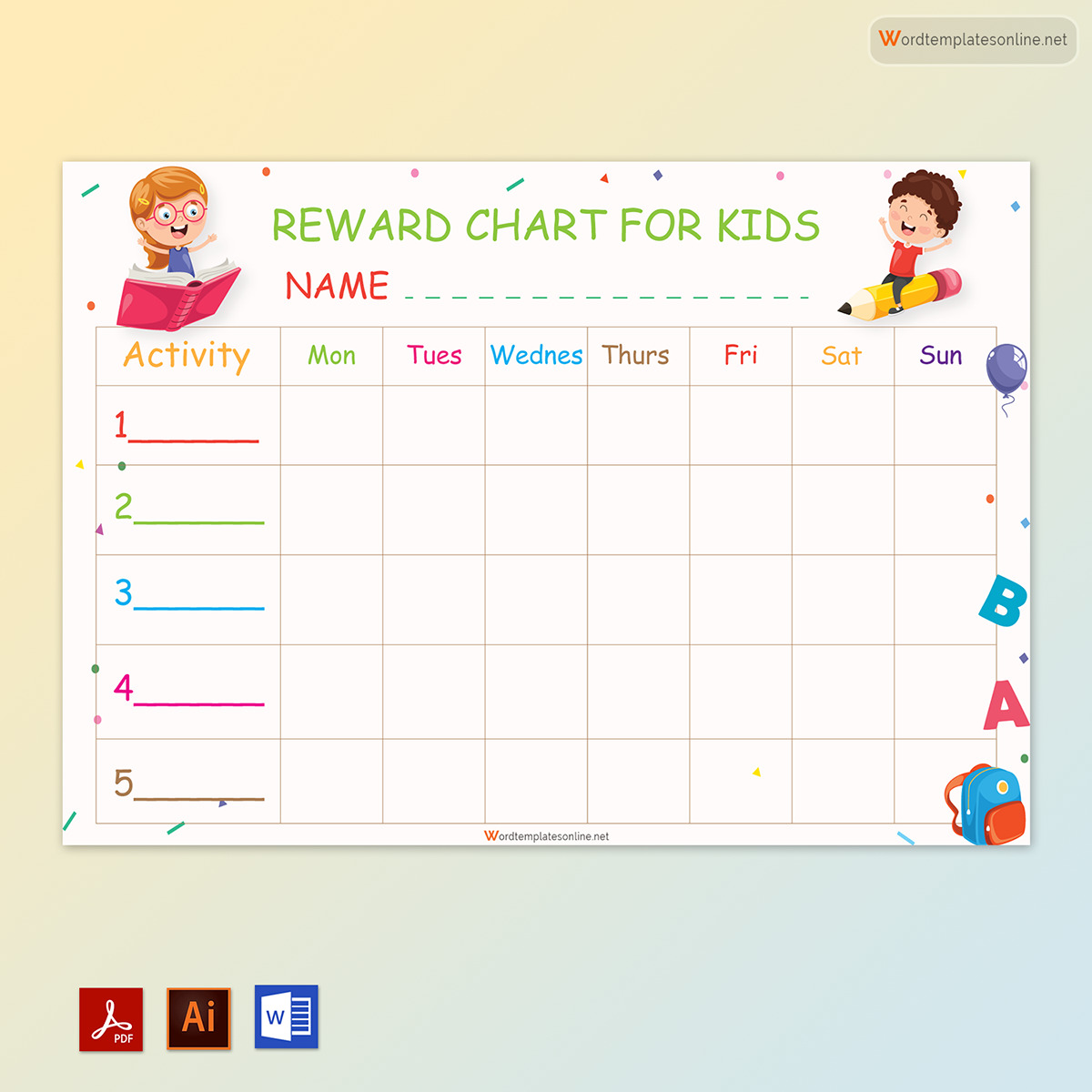
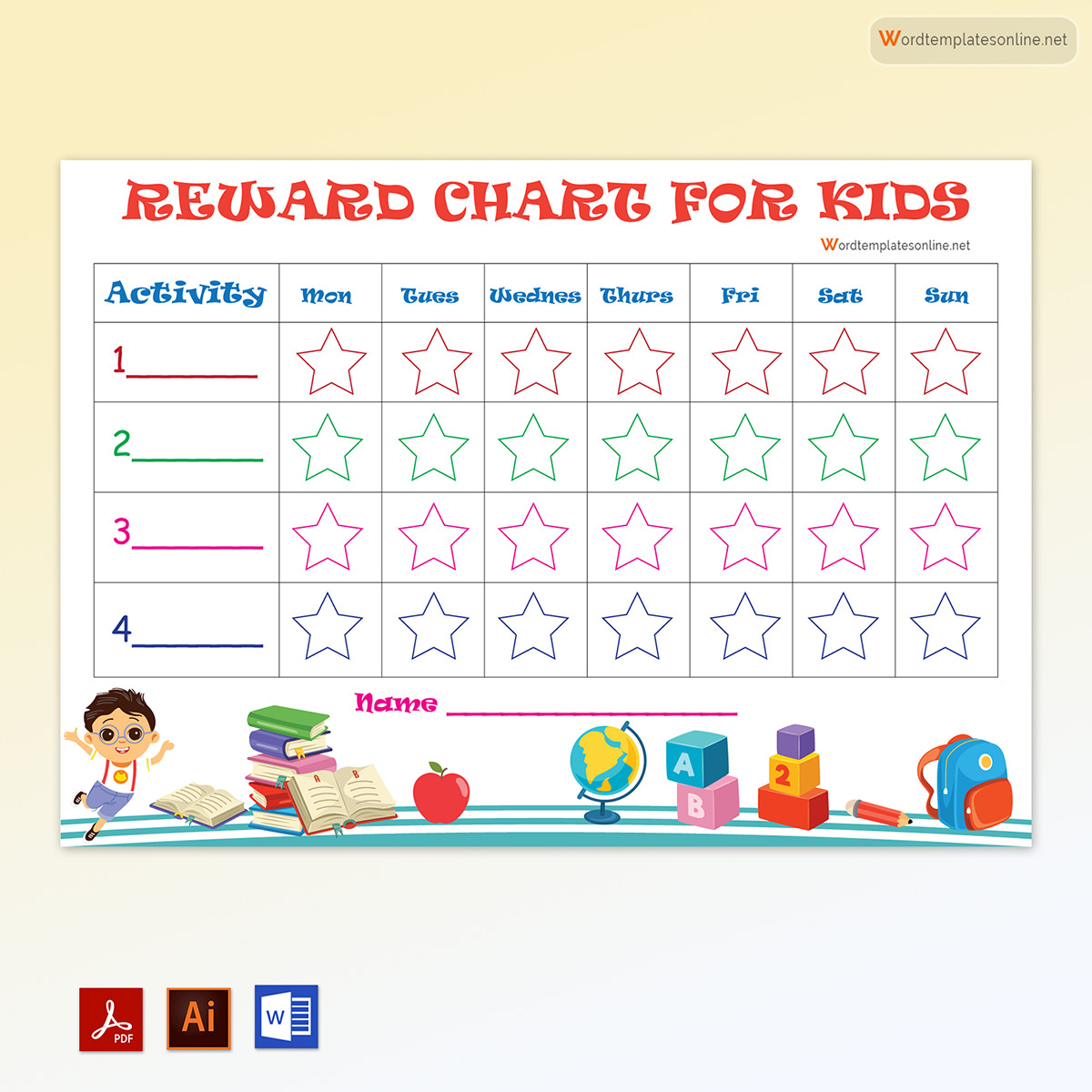
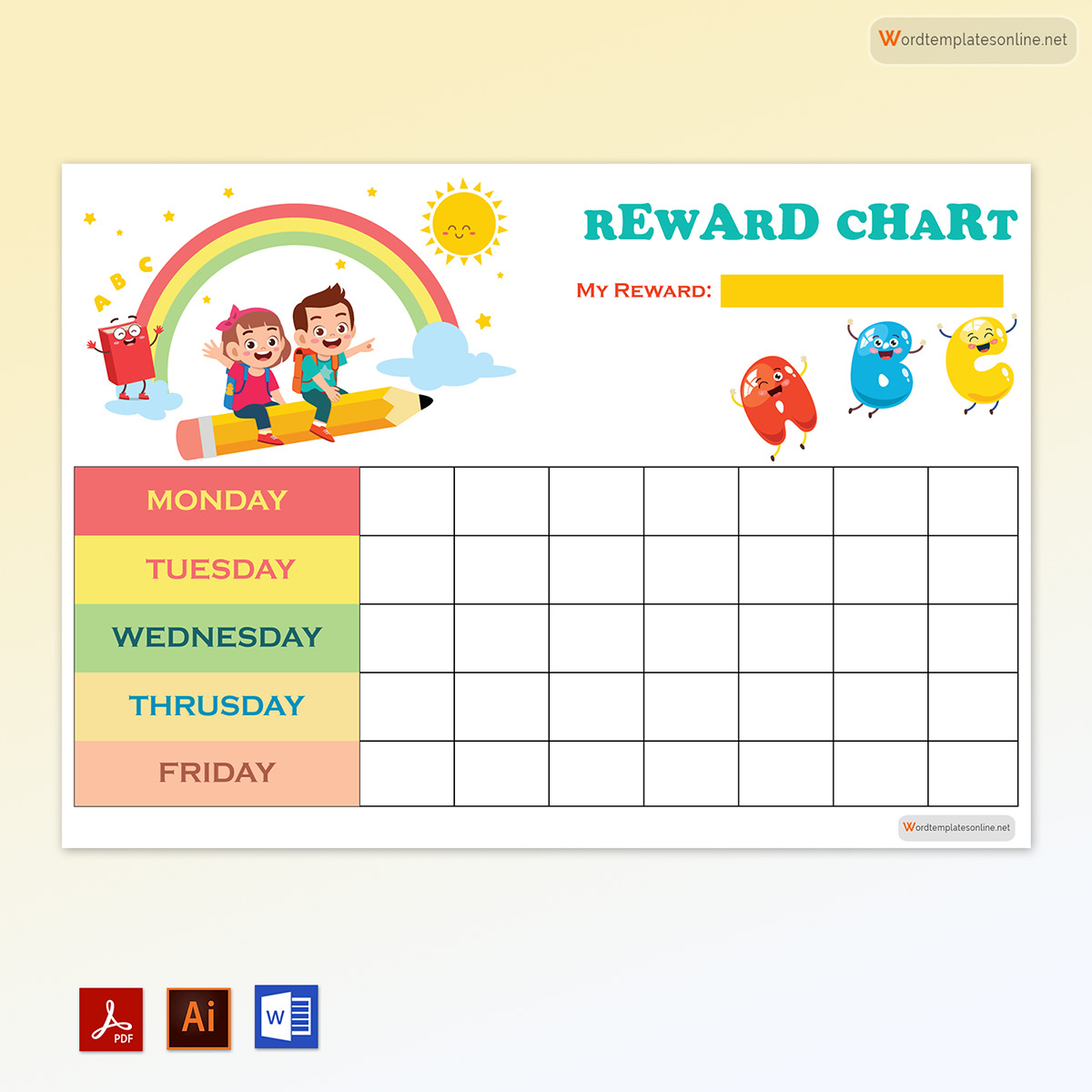

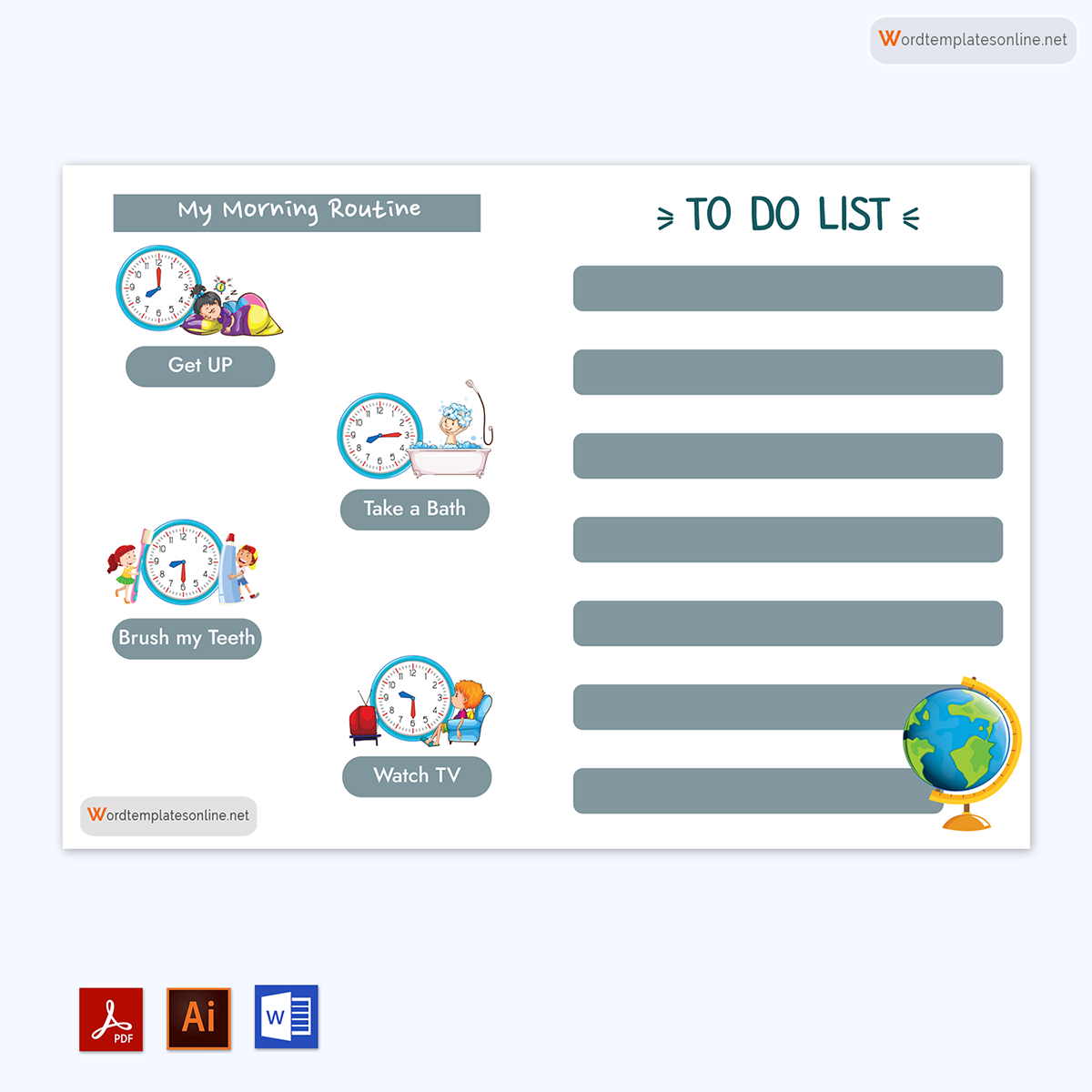
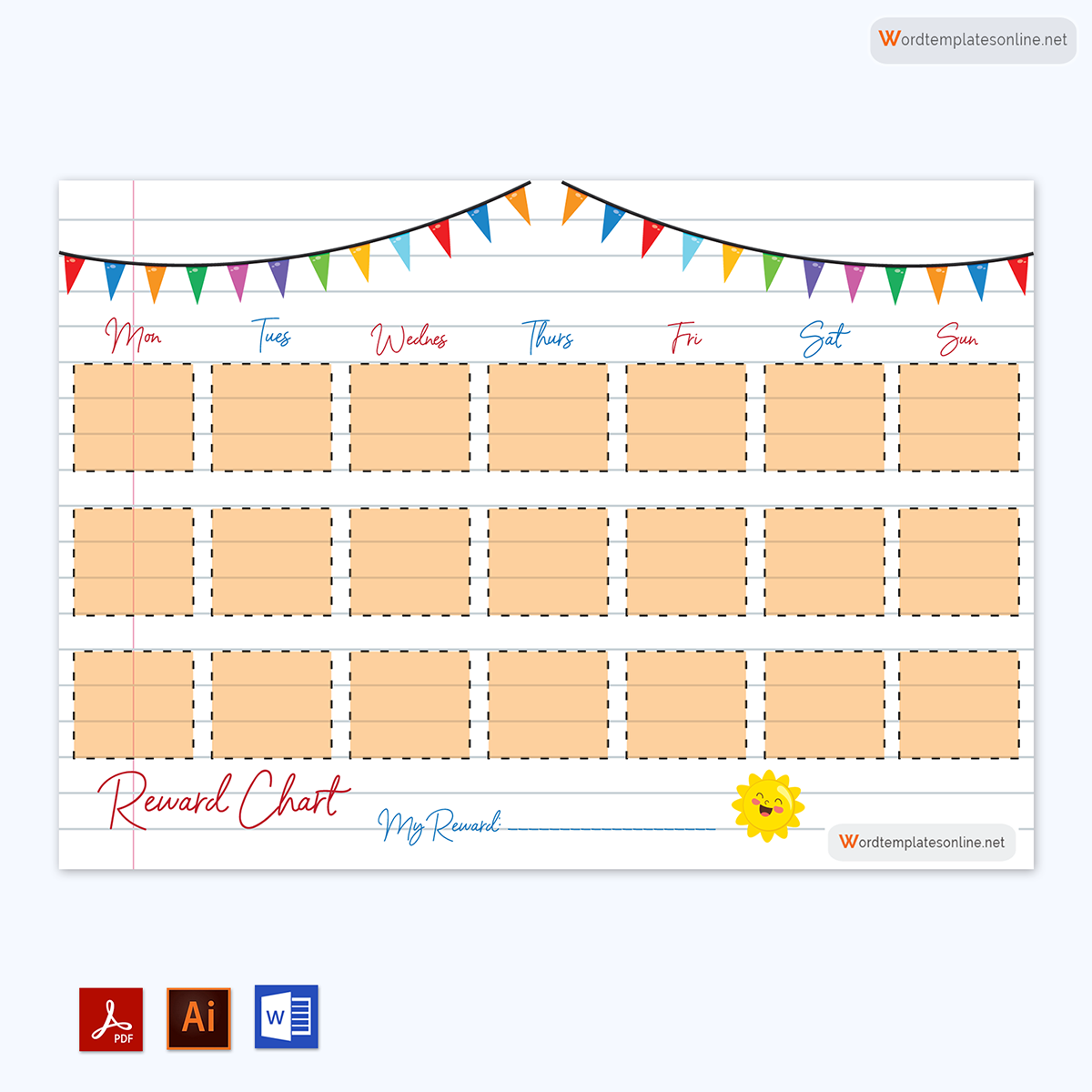
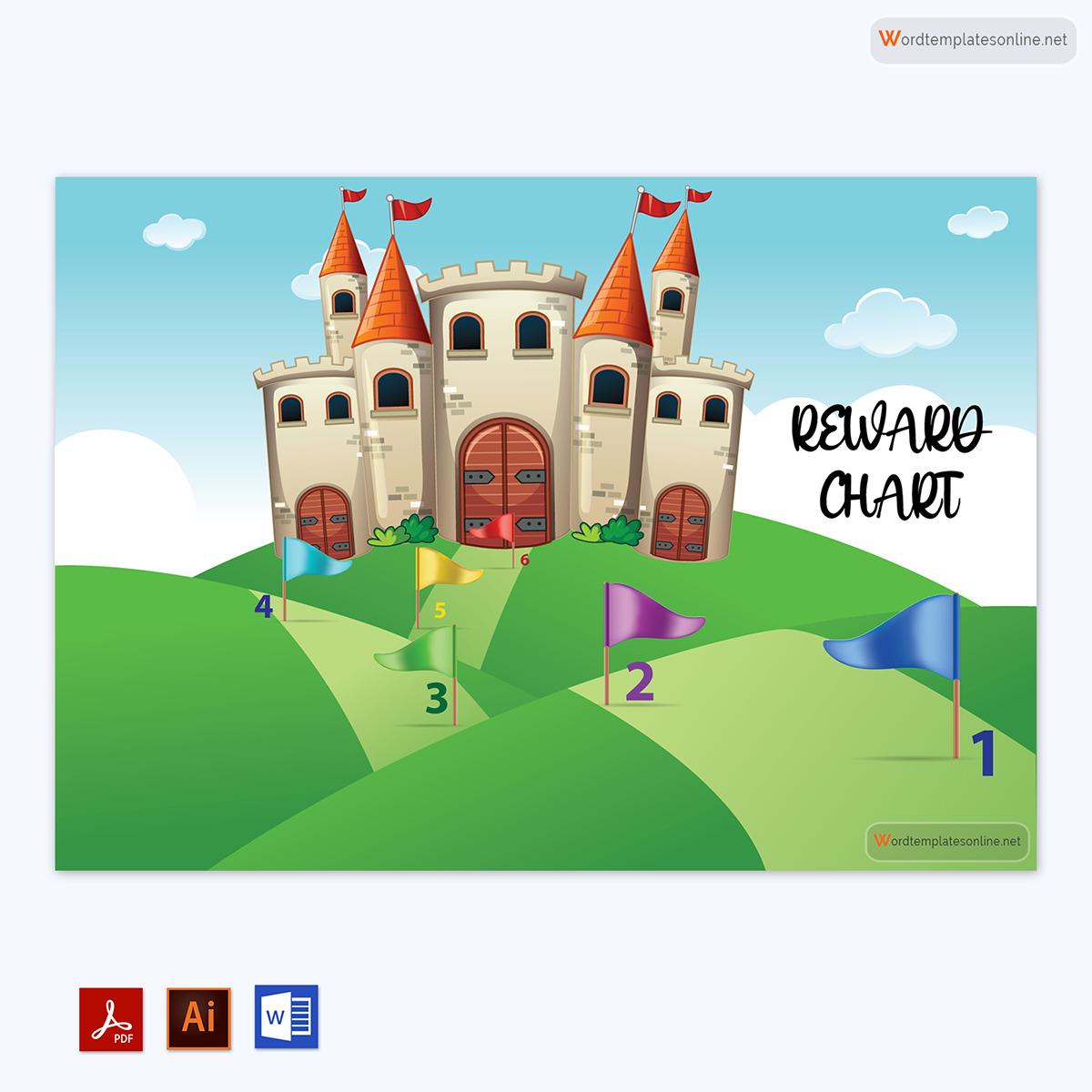
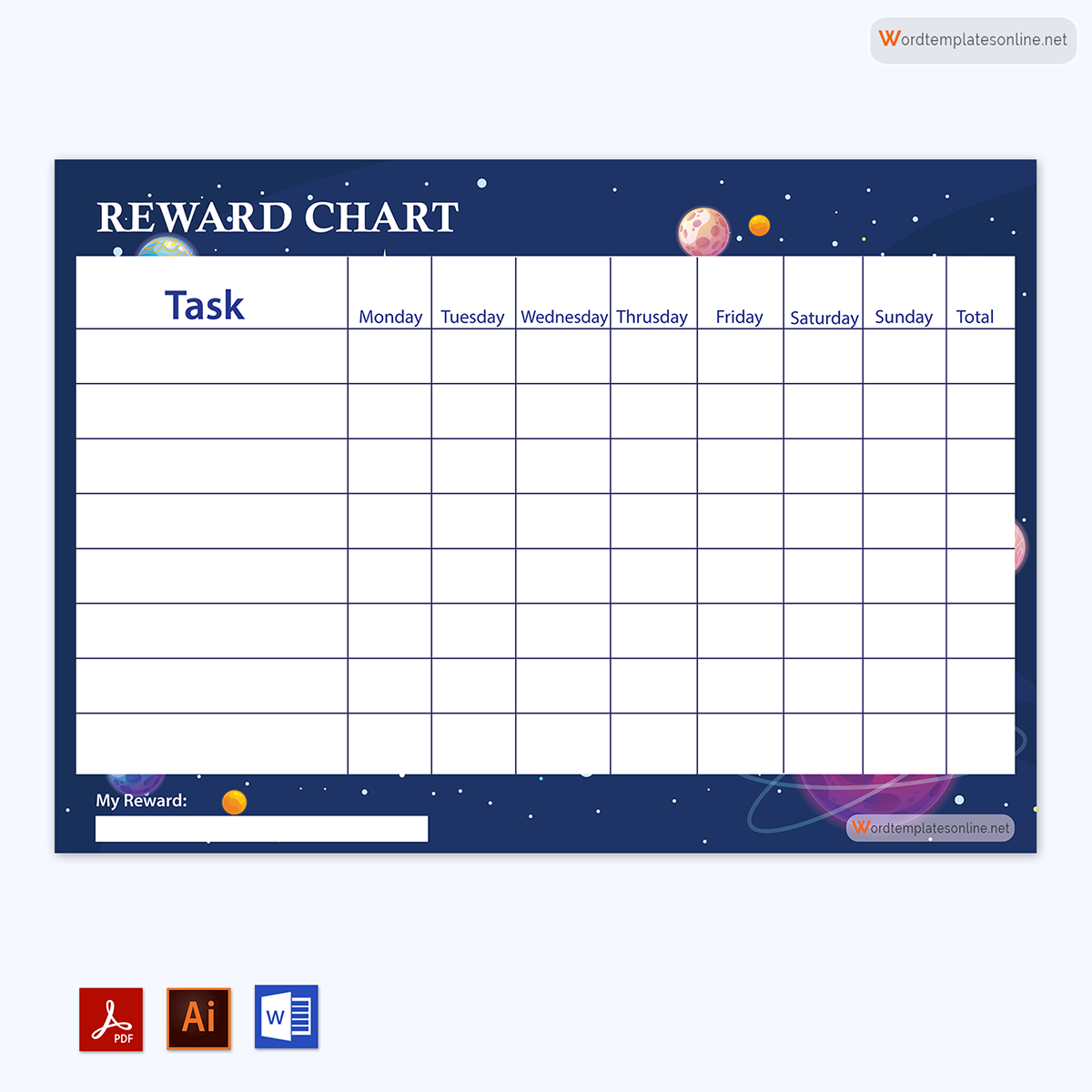
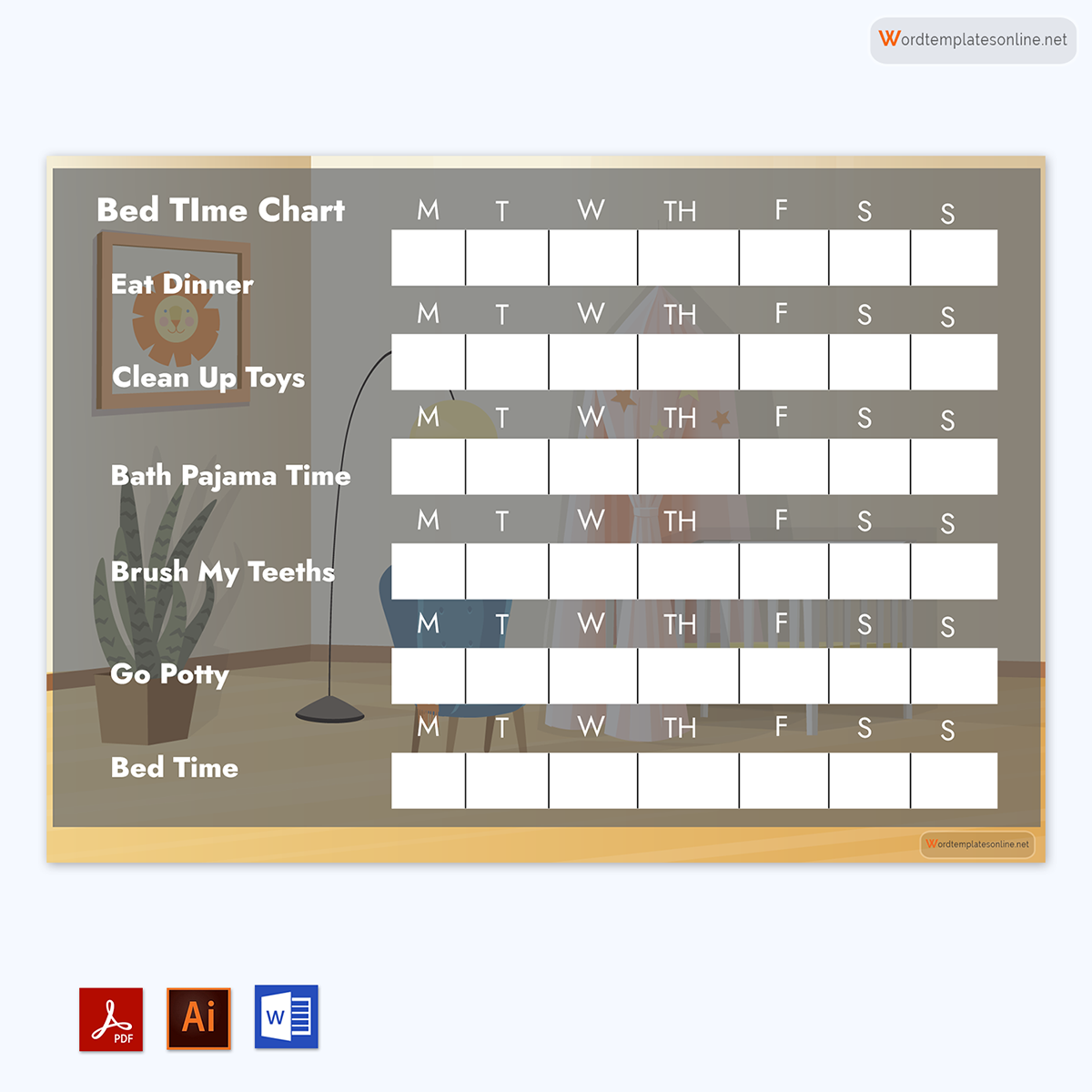

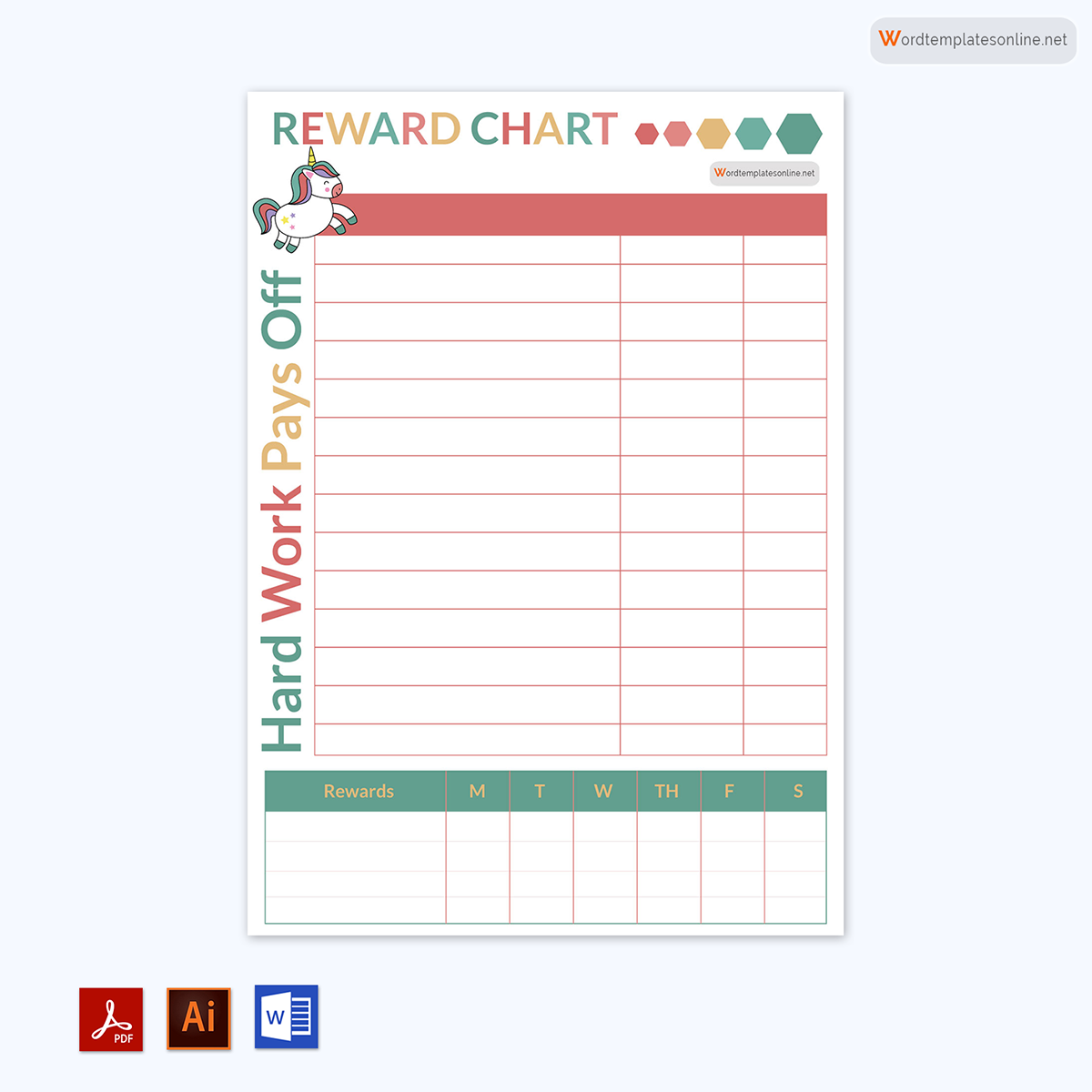
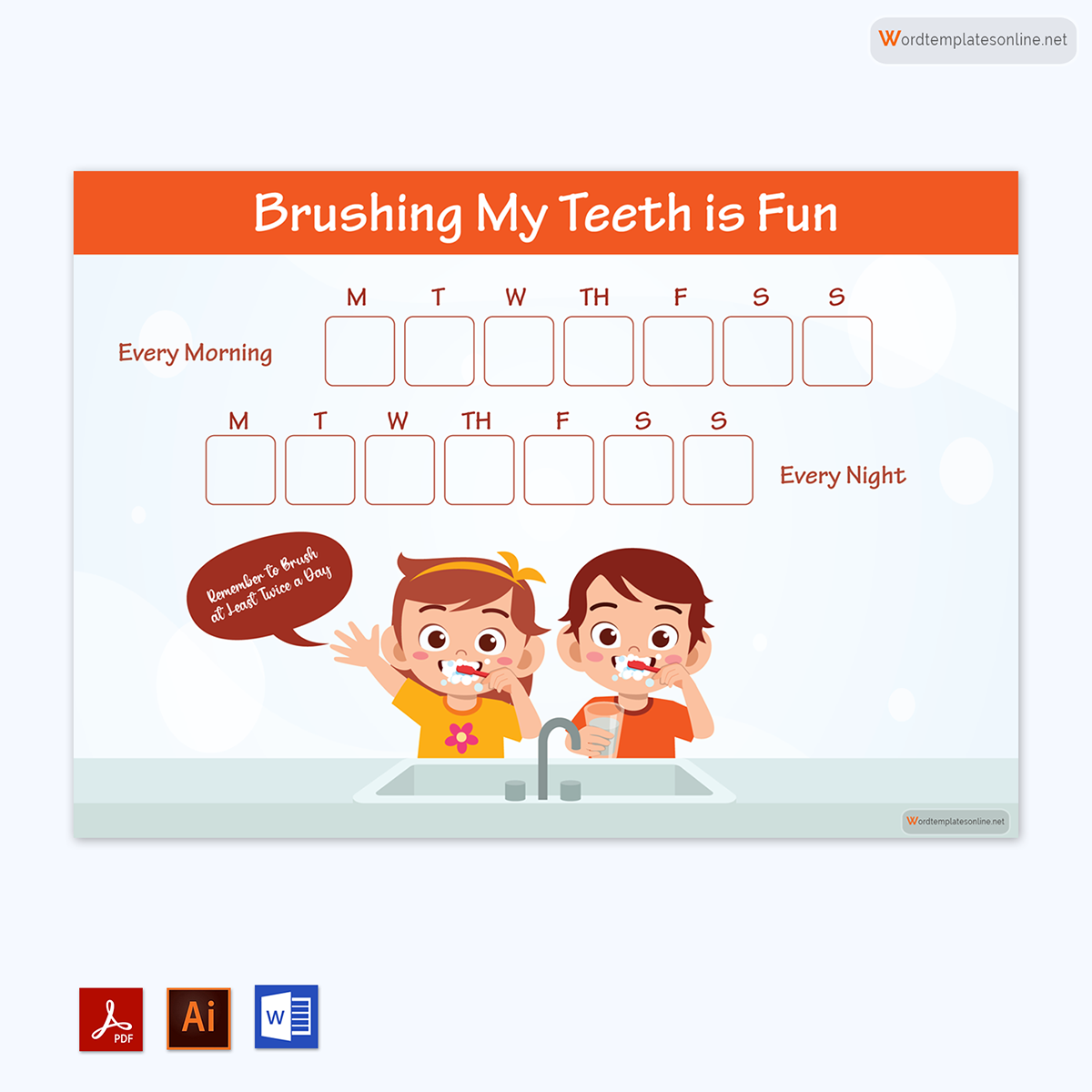

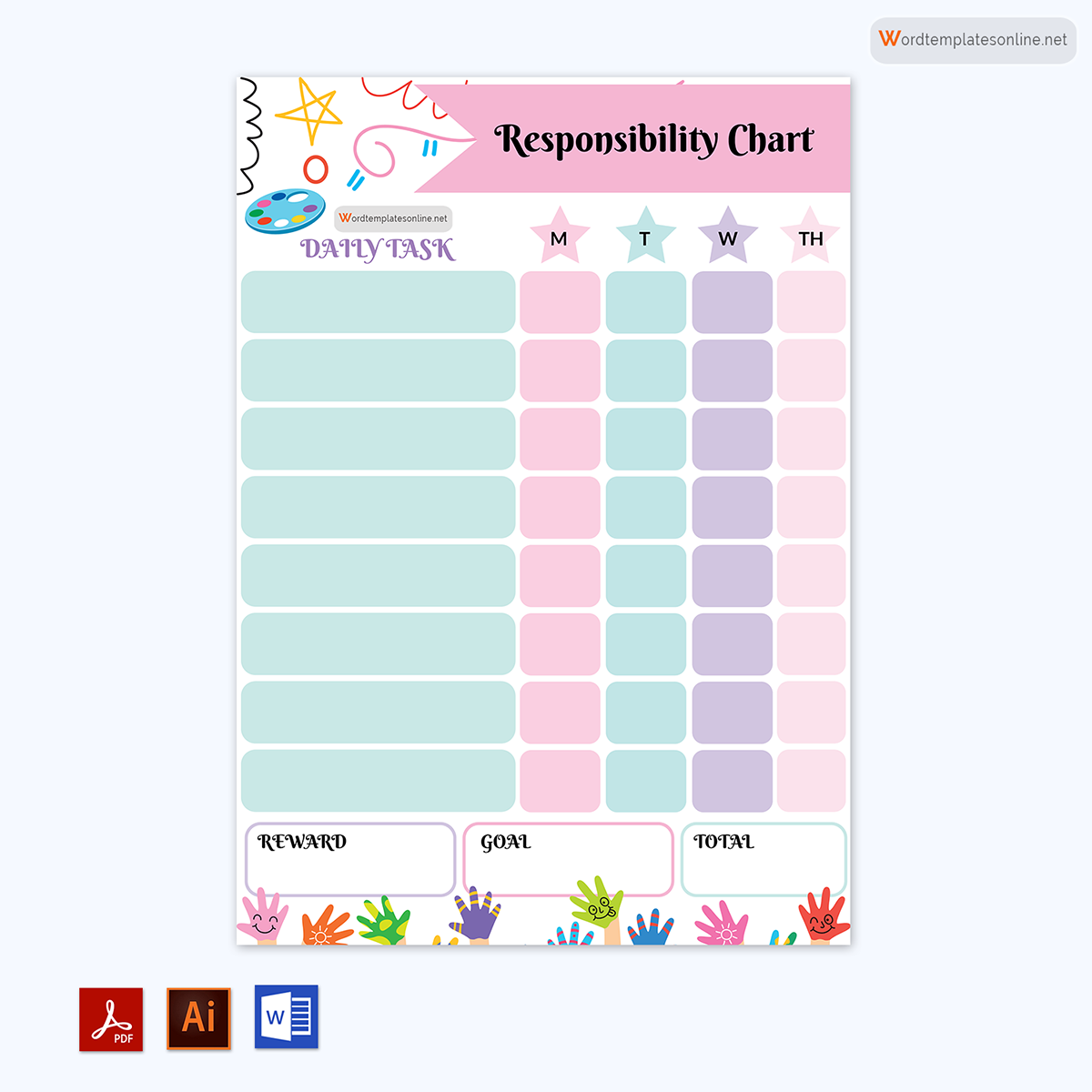

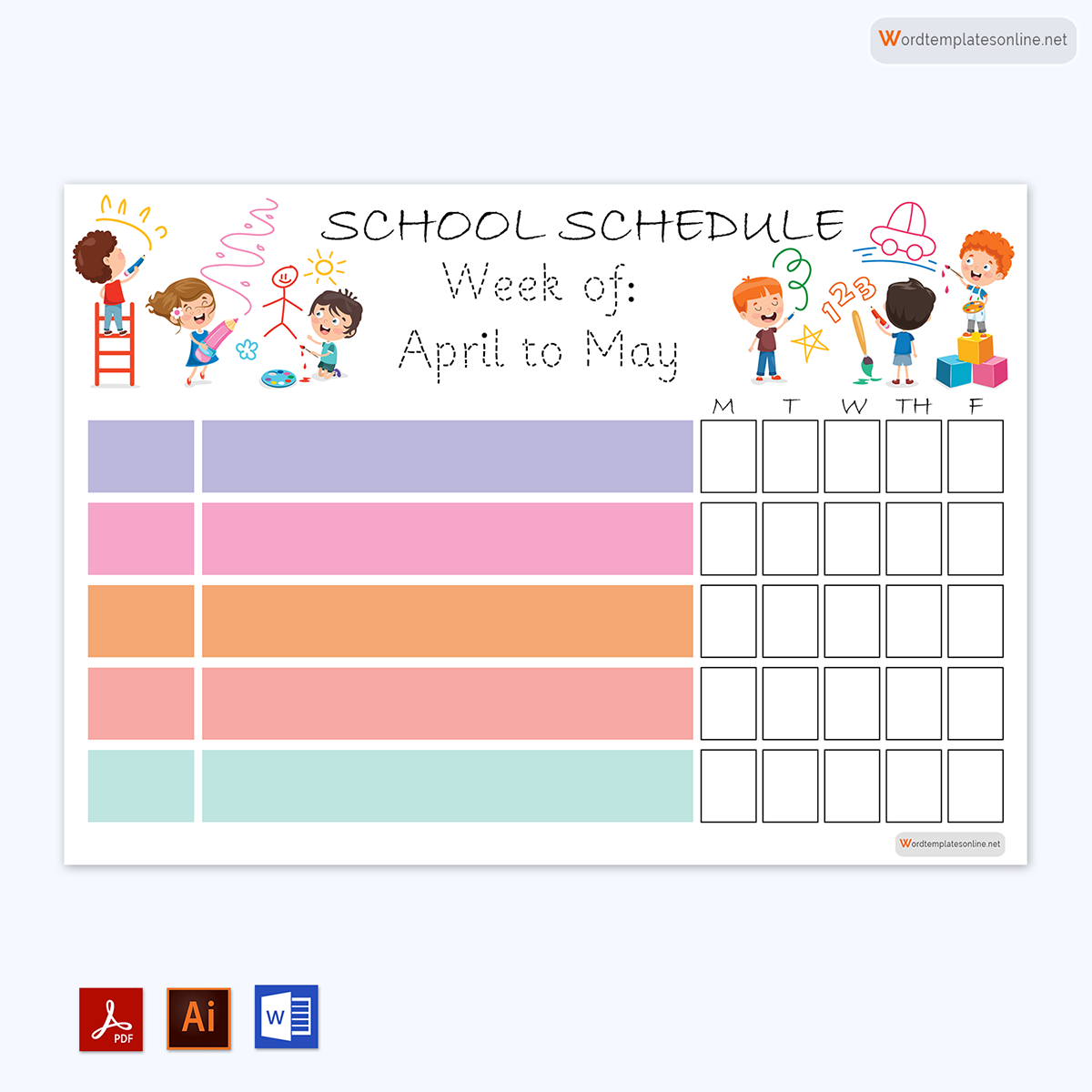

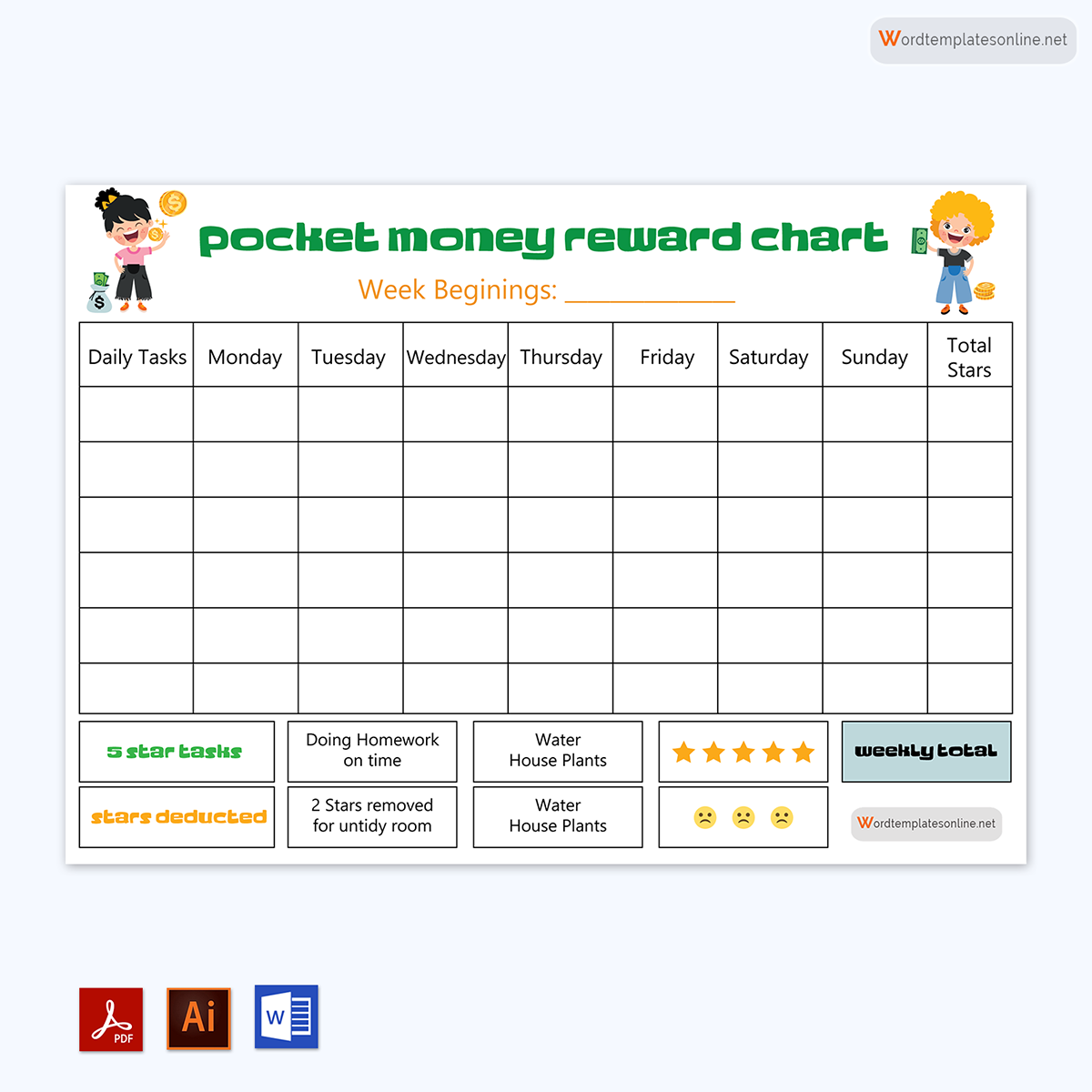
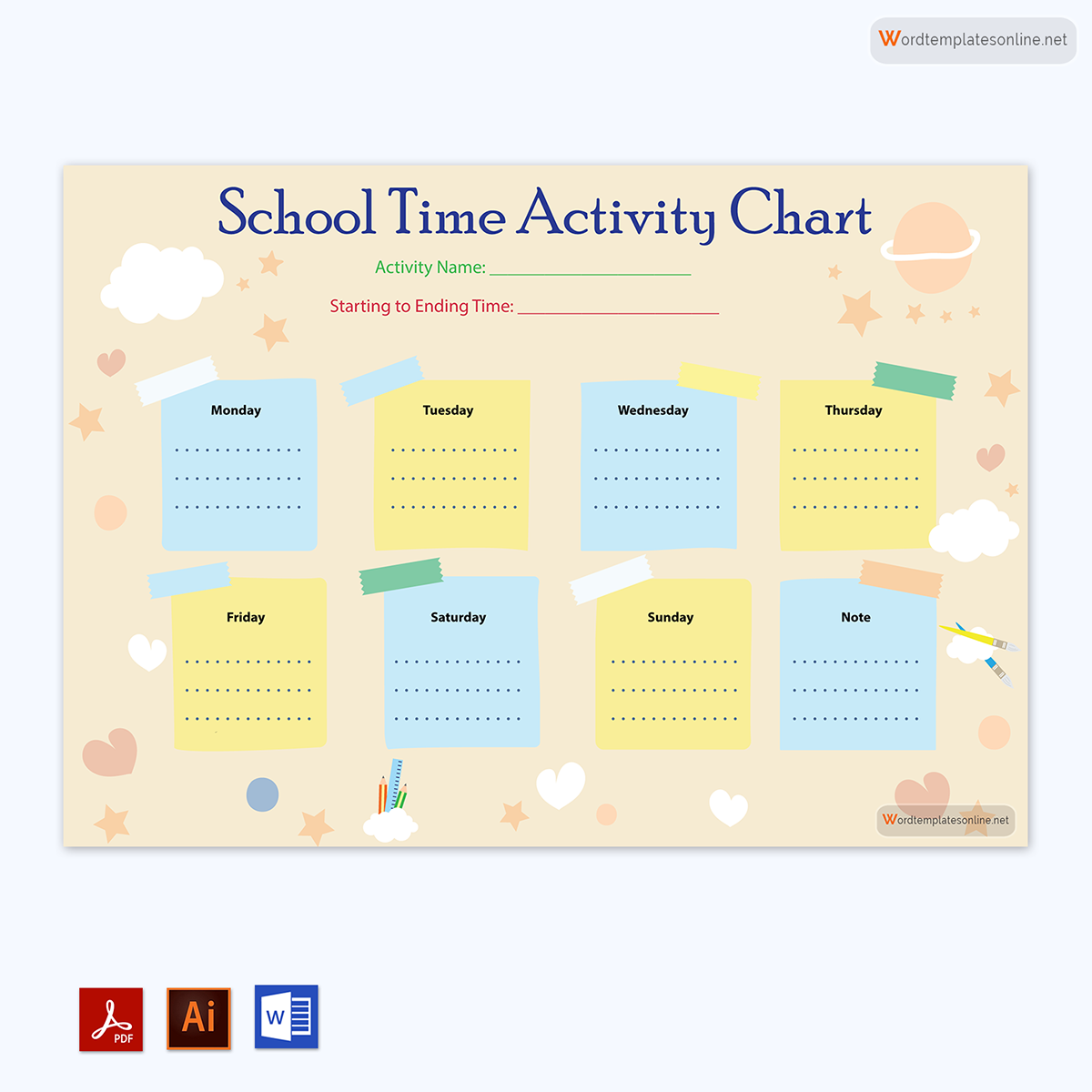


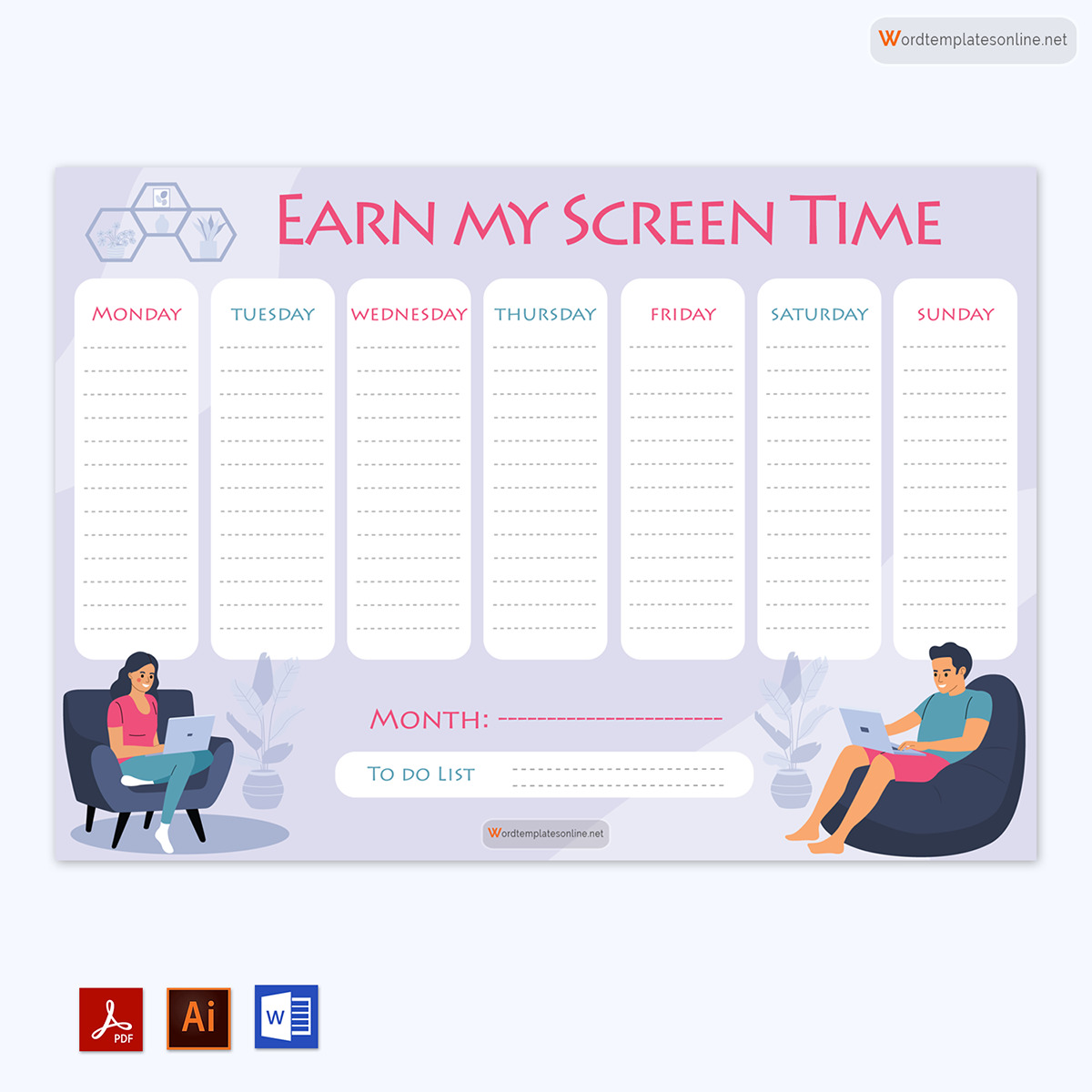

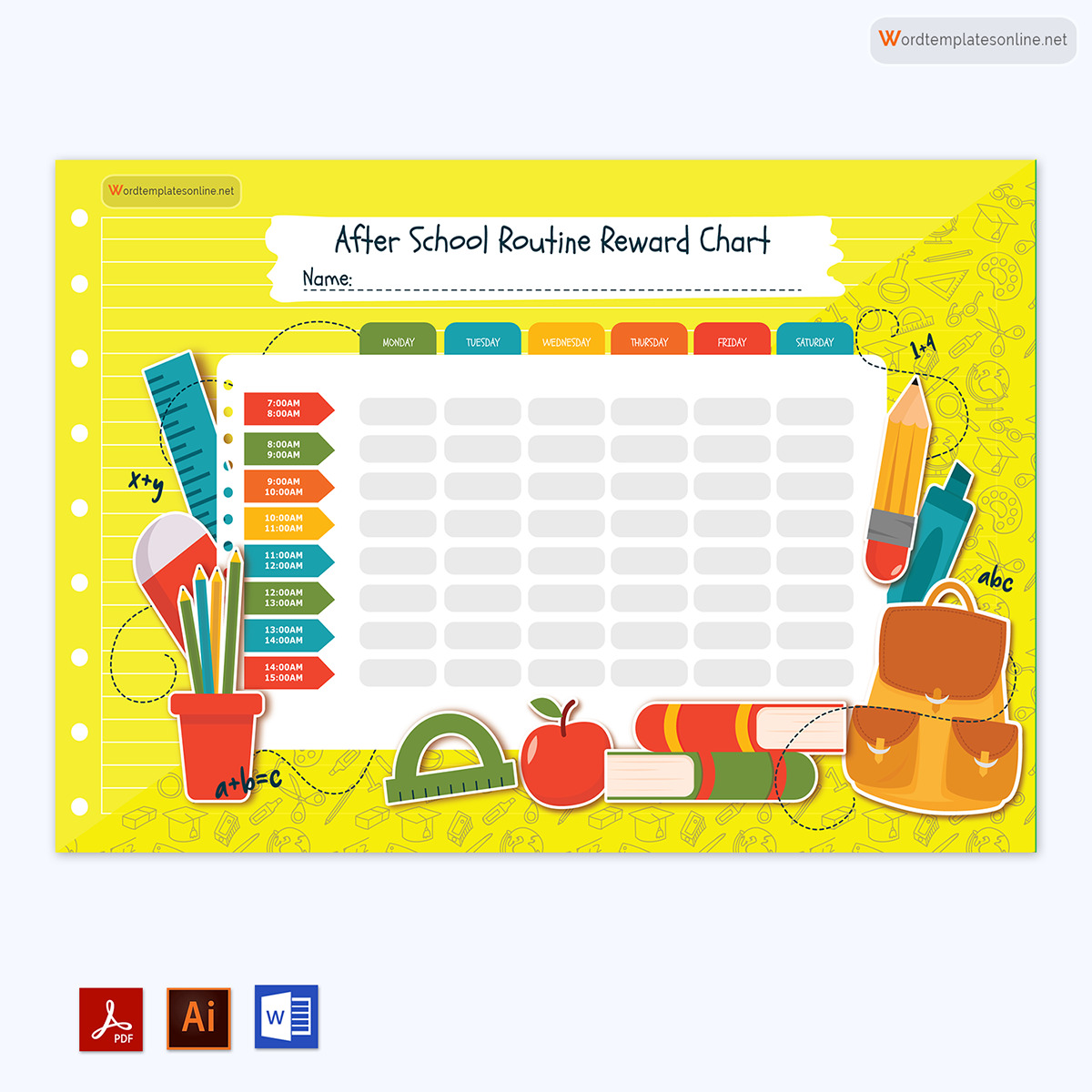
Goals of Using a Reward Chart
Just like adults, children do better when they have clear, written goals. Such a chart is a great way to share goals with children and motivate them to monitor their progress in a fun and visual way.
The following are some of the main goals of using it for kids:
- To encourage kids to change their behavior through positive reinforcement
- To encourage children to stick to a routine, such as brushing teeth at least twice a day, keeping the bedroom clean and tidy throughout the week, reading, or doing homework, washing hands after visiting the toilet, bathing daily, and bed early, etc.
- Motivating children of all ages to become more responsible by completing their daily chores to earn privileges such as electronics time or a weekly allowance.
Benefits of a Reward Chart
It is a system that caregivers use to track their children’s behavior and incentivize them to modify their behavior and life’s choices. Such charts are incredibly beneficial even when children show Attention-Deficit/Hyperactivity Disorder (ADHD), such as trouble paying attention, controlling impulsive behaviors, or being overly active.
Discussed below are the main benefits of using it for kids:
First, these charts for kids are fun because they are visually appealing and draw children’s curiosity. By allowing children to draw marks on the charts or put their stickers on the charts, they will have fun mixing colors and faces to match specific patterns, which leads to a change of focus from simply completing tasks and chores to accumulating more markers and stickers for their patterns. This encourages behavioral change.
Secondly, they are the motivation for children. Motivation to complete them comes from the sense of the progress the child always provides. Since the charts are usually placed where the child can easily see and access them, they will constantly remind them of the two most essential elements: the reward and the progress. This motivates them to complete it and claim their reward, reinforcing good behavior and instilling discipline among kids.
Finally, earning small privileges gives children a strong sense of accomplishment for their hard work. This makes the child feel empowered and acts as a positive reminder to behave in a certain way.
How Does a Reward Chart Work?
They work best when the target behavior is clearly defined, the rewards are attainable, and the child wants the reward. Discouraging bad habits and instilling good behavior among children demand efforts from both the child and the caregiver and such charts work best when both parties are entirely on board.
Parents, teachers, or caregivers identify a suitable chart in the form of a poster or calendar that can be hung on the wall or a smartphone app that can be edited and updated. On it, the parent or caregiver lists a series of goals that they want the child to accomplish, and the child works hard to earn the rewards in the form of points, stickers, ticks, or stars. They receive a reward once they have accumulated a specified number of points, stickers, or gold star points.
The reward issued depends on the age, personality, and interests of the child. For example, toddlers and preschoolers can earn rewards such as a new toy, a new book, candy, a bar of chocolate, etc. However, school-aged kids will feel happier and more motivated when they receive more enormous incentives such as a trip to the playground, a later bedtime, an extra hour to play video games, or small amounts of money.
It is important to note that reward systems work best when the goals are small and achievable. However, parents, teachers, and nannies should update the chart periodically. For example, after every two weeks, monthly, or after two months, to ensure continuous improvement and avoid boredom due to monotonous tasks and rewards.
Such charts have proved to be effective in instilling good habits due to the following reasons:
- They keep the child motivated by showing them when they have done an excellent job for changing their behavior.
- The incentives issued to children reinforce good behavior.
- They help parents and caregivers focus on the positives of their child’s behavior, especially when they feel frustrated by their child’s acts or focus more on the child’s negative behavior.
How to Set-Up a Reward Chart
The following is a procedural guide on how to set it up that would help impart positive behavior and good habits in a child through positive reinforcement:
Describe the behavior
These charts are a tool for encouraging new behavior rather than reacting to undesirable behavior. Therefore, as a parent, teacher, or caregiver, the first thing to do when setting it up is to clearly and positively define the behavior you want to encourage. The child understands what behavior will earn them a reward and what will not.
Therefore, it is essential to focus on one behavior at a time to avoid confusing the child. In addition, try to be as specific as possible as to what constitutes good and deserves a reward to avoid future arguments with the child and frustrations when they do not earn a reward.
Design a chart
The next step involves designing a suitable chart based on your child’s age, interests, or preferences. There are various types to choose from, including a physical chart in poster or calendar form, a mobile phone or computer app that lets you and the child track progress across multiple devices.
After choosing a suitable one, you will need to place where everyone can access it easily to reference and adjust as needed throughout the day.
If your child is between ages 3-9, you should choose a chart that is brightly colored, fun to work with, and visually appealing to help keep things simple and tangible for the child.
Choose short term rewards
Next, choose rewards that celebrate your child’s behavioral achievements and make sure that the child is excited by the prospect of the reward to help motivate and encourage them to take extra special effort to achieve it. While choosing rewards, avoid offering the grand prize too soon, which makes the child lose interest more quickly. Instead, offer short-term rewards that get better as time progresses.
For example, during the initial stages of setting up the reward system, offer rewards that don’t cost anything, such as an extra bedtime story, a chance to bake cookies together, play a game together, or watch a favorite film together, etc.
Then, as the weeks go by and the child continues with the positive behavior, you can offer them something more valuable like a trip to the park or a new electronic gadget such as kids playing tablet or mobile phone, if applicable.
Provide stickers as reward
In the beginning, the rewards should be earned frequently, preferably every single time the child demonstrates the encouraged behavior. If this is impossible, you can try dividing the reward time into small manageable blocks, for instance, after 15 minutes of managing to sustain the good qualities.
Then, once the child is engaged and doing the target behavior habitually, you can move the goalposts to earn rewards after every 30 minutes, 1 hour, and eventually a whole day. This idea is to phase out the chart after a given period, say, after four to six weeks, once a new habit has been achieved to avoid reward dependence.
Try to stay positive
Behavioral change takes time and much effort. Therefore, parents or teachers should not expect the child to adapt to the changes immediately. The child will be bound to make many mistakes, but parents and caregivers should focus more on the positives. Every time a child does the right thing, reward them right away and back up the rewards with lots of praises and acknowledgment.
Avoid taking away stickers or rewards when the child gets it wrong, as not getting the reward at that particular time is enough consequence for them to learn. In such cases, encouraging them to make extra efforts to get it right next time.
Move on from the reward chart
Once the child has accomplished the desired behavioral pattern, it is time to stop using it to discourage reward dependence. However, this should not be done instantly or suddenly, as the child will likely return to the old habits. Instead, it would be best to gradually phase out the reward system by increasing the length of time between rewards and recognition instead of actual rewards.
Monitor the progress
Suppose your goal is to encourage genuine behavioral modification for your child. In that case, you need to ensure that this system is working as expected and not simply allowing the child to earn rewards without changing their behavior.
As such, monitoring your child’s progress is essential to evaluate the system’s efficiency and update where necessary. If you feel that the chart is not working as expected, it is essential to abandon it in favor of a different behavioral improvement strategy.
Do’s for Kid’s Reward Chart
When setting it up for kids, there are certain things that you should keep in mind. Following are the things that you should do while using it in order to encourage good behavior in the kids:
Recognize when the child is behaving well
Parents and caregivers should strive to notice when the child is behaving well to emphasize good behavior. For example, suppose a mother wants to encourage eating vegetables without whining. In that case, she can identify any two times a day that the child completes their meals, including the vegetables, and mark it off on the chart.
note
Remember to reward stickers instantly and praise them enthusiastically to reinforce the positive change.
Follow through with the reward charts
If you set it up, you need to see it through such that you don’t encourage going back to the old habits/behaviors. This helps develop the idea that giving up is not an option for the child or a simple way of doing something they dislike.
Stay positive
Such charts work on the idea that behavior modification is reinforced positively and not with punishment.
Make a simple and measurable reward chart
These charts function well when the set goals are simple, measurable, achievable, and specific. The child understands what is expected of them, what constitutes good behavior, and what may or may not earn them a reward. While rewarding children for basic things may be viewed as spoiling or bribing them, such a chart slowly builds good behavioral habits.
Things to Avoid
There are a few things that you need to avoid to ensure it is effective in reinforcing positive behavioral change among kids. These things include:
Bribes
Despite how desperate you are to get your child to improve their behavior, you should never use a reward system as a bribe. Bribing your child could result in them acting on purpose because they know a reward awaits them when they change the behavior.
Straying from the reward chart system
These charts clearly state your child’s expectations, but they only work as long as parents or caregivers keep at it. Even the simplest form of it requires a lot of energy, effort, and time to implement. Therefore, you should continuously monitor what your kids are doing and how they are doing it to ensure the system works well.
Giving rewards too easily
Children should not anticipate a reward for any little thing they do as this could make them reward-dependent. To avoid this, caregivers should always stick to the goals set on the chart and only offer rewards when genuine progress has been accomplished.
Overusing the chart
These charts should only be used over short periods, for example, for 3-4 weeks maximum. This is because they incentivize children to adapt to specific behavioral changes through continuous practice. However, tantrums and bad behavior might still happen regardless of the charts, which is why caregivers should phase them out after a given period.
Expecting too much
Behavioral change doesn’t happen overnight. It may take some time, especially for foster children who are raised differently and may have deep-rooted behavioral issues. Instead, be patient while the child gets used to the new system and continuously remind them what constitutes good qualities
Always offering material goods
Rewards do not have to be costly all the time. Instead, parents can offer kids simple rewards such as cooking time with mummy, extra playtime, late bedtime, a chance to watch a favorite movie on movie night, play a video game with daddy, or a trip to the park. Getting creative with rewards will you help you to bond as a family while still reinforcing good habits.
Choosing unappealing rewards
When deciding on the rewards to offer your kids, you should consider setting the bar a bit high by setting goals they can’t achieve without making sacrifices or putting in the extra effort. This way, you will keep the child engaged, and they will be more interested in the reward system. Otherwise, they will get bored too quickly, making your reward system fail prematurely.
Conclusion
These charts for kids have proved to be effective means of encouraging good behavior among children, especially those between the ages of 3-9. There are various types that parents, teachers, or caregivers can choose from, but choosing a reward system that works for a particular kid depends on the child’s age, temperament, interests, and what behavior the caregiver is explicitly trying to instill.
These charts offer children tangible incentives to complete tasks they dislike doing, and they offer parents, teachers, and caregivers great peace of mind. They can help build good habits, help with children’s development, and instill a sense of routine while focusing on the child’s good behavior positively and in an empowering way.
Nonetheless, caregivers should be aware that in some cases, the chart can instill in children the idea that there is no point in completing tasks or chores if they are not rewarded or compensated for them. Thus, it is prudent to monitor children’s responses to it for ensuring that the system is helping achieve the desired effect.




